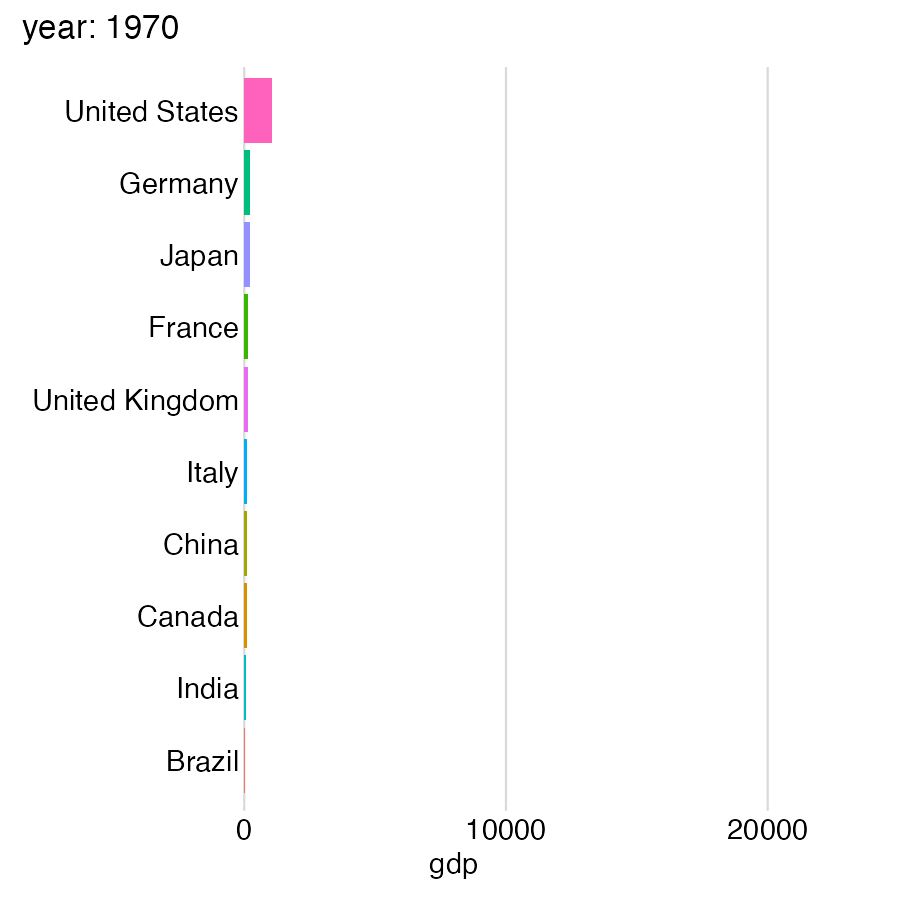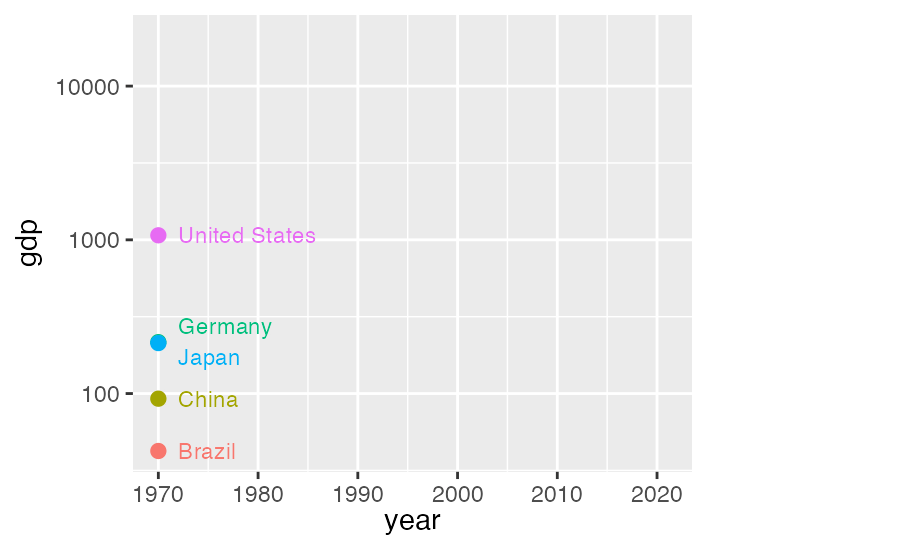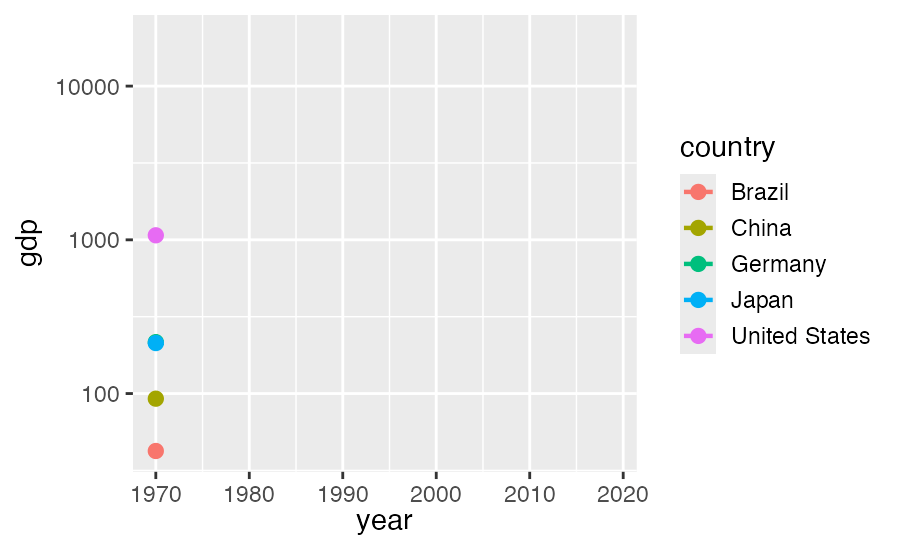
Animations
Claus O. Wilke
2025-04-16
Animations can create more engaging displays
Data source: World Bank
Animations can create more engaging displays

Data source: World Bank
We make animations in R with gganimate
The gganimate package adds powerful animation tools to ggplot2
Getting the data
We’ll be working with the gdp_ranked dataset:
gdp_ranked <- read_csv("https://wilkelab.org/SDS366/datasets/gdp_ranked.csv") |>
mutate(rank = fct_rev(factor(rank)))
gdp_ranked# A tibble: 500 × 6
country country_code year gdp rank gdp_rel
<chr> <chr> <dbl> <dbl> <fct> <dbl>
1 Brazil BRA 1970 42.3 10 0.0395
2 Brazil BRA 1971 49.2 10 0.0424
3 Brazil BRA 1972 58.5 10 0.0457
4 Brazil BRA 1973 79.3 10 0.0555
5 Brazil BRA 1974 105 9 0.0677
6 Brazil BRA 1975 124 9 0.0738
7 Brazil BRA 1976 153 9 0.0818
8 Brazil BRA 1977 176 8 0.0846
9 Brazil BRA 1978 201 8 0.0855
10 Brazil BRA 1979 225 8 0.0856
# ℹ 490 more rowsHow should we think about making an animation?
Think of an animation as faceting by time
We know how to make a faceted plot
Making an animation is about as complicated

Adding country names and plot title
gdp_ranked |>
ggplot(aes(gdp, rank, group = country)) +
geom_col(aes(fill = country)) +
geom_text(
aes(x = -200, label = country),
hjust = 1, size = 14/.pt
) +
xlim(-7000, 23000) +
labs(title = "year: {closest_state}") +
theme_minimal_vgrid(14, rel_small = 1) +
theme(
axis.text.y = element_blank(),
axis.title.y = element_blank(),
axis.ticks.y = element_blank(),
axis.line.y = element_blank()
) +
guides(fill = "none") +
transition_states(year, transition_length = 5)
We make time series with transition_reveal()
This works also with ggrepel for labeling
gdp_ranked |>
filter(country %in% selected) |>
ggplot(aes(year, gdp, color = country)) +
geom_line() +
geom_point(size = 3) +
geom_text_repel(
aes(label = country),
hjust = 0,
nudge_x = 2,
direction = "y",
xlim = c(NA, Inf),
segment.color = NA
) +
scale_y_log10() +
guides(color = "none") +
coord_cartesian(clip = "off") +
theme(plot.margin = margin(7, 100, 7, 7)) +
transition_reveal(year)
Reproducing the famous gapminder animation
library(gapminder)
gapminder %>% filter(continent != "Oceania") |>
ggplot() +
aes(gdpPercap, lifeExp, size = pop) +
geom_point(alpha = 0.7, color = "#0072B2") +
scale_size(range = c(2, 12), guide = "none") +
scale_x_log10(name = "GDP per capita") +
facet_wrap(~continent, nrow = 2) +
labs(
title = "Year: {frame_time}",
y = "life expectancy"
) +
transition_time(year) +
ease_aes("linear")
See Hans Rosling video here
Further reading
- gganimate documentation: Getting started
- gganimate reference documentation:
transition_states() - gganimate reference documentation:
transition_reveal()

